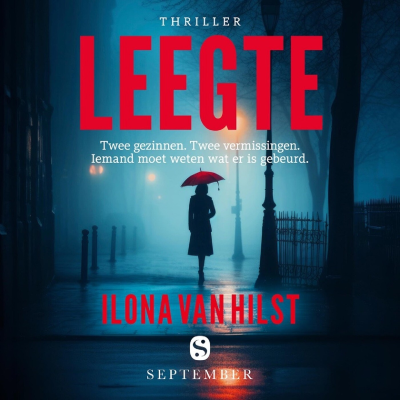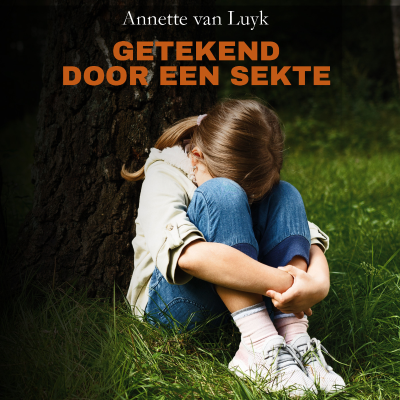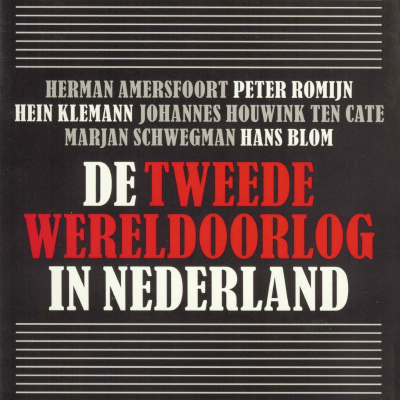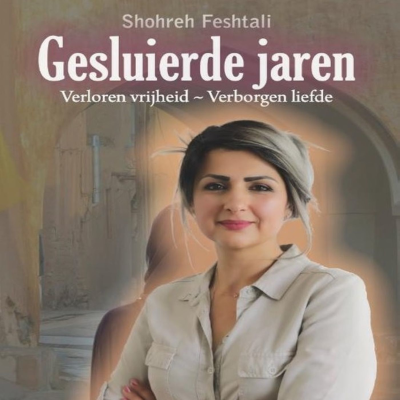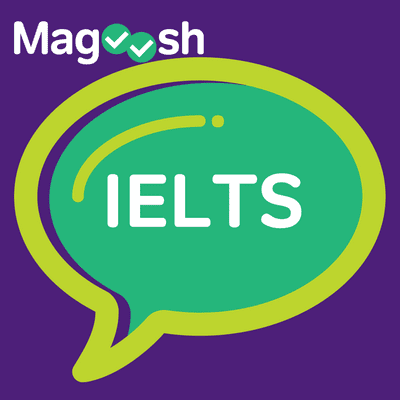
Magoosh IELTS
Podcast door Magoosh IELTS: Online IELTS test prep
Listen to the Magoosh IELTS podcast and learn everything you need to know to get a higher IELTS band score.
Tijdelijke aanbieding
3 maanden voor € 1,00
Daarna € 9,99 / maandElk moment opzegbaar.
Alle afleveringen
28 afleveringenIn this episode, Eliot shares a special announcement about how to study for IELTS amid Covid-19 concerns. Episode resources and links: * Magoosh IELTS YouTube Channel [https://www.youtube.com/channel/UCra3KQoJlOP7RYwaCyH2qew] * What to Do if Your Study Plans Have Been Interrupted by Covid-19 [https://magoosh.com/ielts/ielts-resources/what-to-do-if-ielts-study-plans-disrupted-coronavirus-covid-19/] How to study for IELTS during Covid-19 Naomi: Welcome to the Magoosh IELTS Podcast. This is a special announcement from our IELTS expert, Eliot. Take it away! Eliot: Hello, I’m Eliot, the IELTS expert at Magoosh, and I’m speaking for all of us here at Magoosh when I say I hope this message finds you and your loved ones in good health during this time of uncertainty in the world. We’re reaching out to you as IELTS students, to let you know that Magoosh will be making every effort to keep you informed on how the rapidly-evolving COVID-19 situation is impacting IELTS study plans and test dates. It’s our top priority to provide you with support and the most up-to-date advice regarding the IELTS and COVID-19. IELTS COVID-19 Tips: So you’re probably wondering how the coronavirus pandemic is affecting the IELTS. Well, in places that have been impacted by the virus, both paper-based and computer-delivered IELTS exam dates have been postponed–either indefinitely, or until at least mid-April. If you were expecting to take the IELTS this month, chances are you’ll be looking at a later testing date. Check out the Official IELTS webpage and get in touch with your local testing center to find out more specific information on when you’ll be able to take the exam. If you were just getting started with your IELTS prep, or you still have a fair amount of time left before you were originally planning on taking the test, your main focus right now will probably be how to adjust your IELTS study plan to make room for any of the big changes we’re all experiencing as a result of COVID-19. With everything that’s been going on in the world, chances are you may have gotten a little bit off-track with your IELTS studies. But don’t worry–you’re not alone! We’ve heard from many students who are feeling overwhelmed and anxious right now, so don’t be too hard on yourself. Falling behind is a common study problem, and it’s pretty much inevitable that most students will have been distracted from their IELTS preparation, considering the impacts COVID-19 is having worldwide. It’s completely okay to take some time before returning to your regular study schedule. When you are ready to move forward with your studies, I’d recommend taking a look at our IELTS Study Plans, and choosing the one that works with your current schedule. But again, don’t be too hard on yourself if you’re feeling overwhelmed. Due to changing circumstances and accommodations, many students are editing down their prior IELTS study plans. On the other hand, you may have suddenly found yourself with a whole lot more free time than you had expected. If you do feel comfortable using that time for extra IELTS practice, I’d recommend you use this opportunity to take more full-length IELTS practice tests–practice tests are the best way to experience real test-like conditions and they’re a great way for you to track your progress over time. If you’re a Magoosh IELTS Premium student–or you’re thinking about signing up–you should know that we are pausing and extending student accounts for free as needed. We also want you to know that our Student Help Team is here not only to help with your IELTS questions, but also with test anxiety and other concerns. Feel free to reach out through the purple Help button on your dashboard or send an email to help@magoosh.com. Final Words In the meantime, we’ll continue to put out new, up-to-date IELTS content over on our YouTube channel every week, so visit the Magoosh IELTS channel on YouTube and subscribe to get our latest videos.! I put a link to our channel in the show notes. We’re following the situation closely and we’ll keep doing our very best to respond to what’s going on, as we continue to help support our IELTS students. We know this is tough, but we’re here for you. Thanks for tuning in!
In this episode, Eliot and Naomi talk about how to understand and respond to an IELTS Academic Writing Task 2 essay question. They'll cover: * Writing Task 2 requirements * Different ways you can write responses to three Task 2 Agree-Disagree example questions Episode resources and links: * IELTS Academic Writing Task 2: The Complete Guide [https://magoosh.com/ielts/ielts-writing-task-2-complete-guide/] * IELTS Writing: To What Extent Do You Agree or Disagree? [https://magoosh.com/ielts/ielts-agree-disagree-questions/] * The Best IELTS Task 2 Writing Template [https://magoosh.com/ielts/the-best-ielts-task-2-writing-template/] * Brainstorming Ideas for the IELTS Task 2 Essay [https://magoosh.com/ielts/brainstorming-ideas-ielts-task-2-essay/] * IELTS Paraphrasing Task 2 | Video Post [https://magoosh.com/ielts/ielts-paraphrasing-task-2-video-post/] Learn how to improve your IELTS band score with Magoosh! [https://ielts.magoosh.com/?utm_source=ieltspod&utm_medium=podcast&utm_campaign=ielts-vocab-mvp] Use coupon code ieltspodcast to save 20% at ielts.magoosh.com Episode 26 Transcript - 3 Example Agree-Disagree Questions Translations: (Tiếng Việt [https://ielts.magoosh.com/ielts-podcast-ep-26-vietnamese-translation?utm_source=ieltsblog&utm_medium=blog&utm_campaign=ieltspodcast&utm_term=inline&utm_content=vietnamese],فارسی [https://ielts.magoosh.com/ielts-podcast-ep-26-farsi-translation-pdf?utm_source=ieltsblog&utm_medium=blog&utm_campaign=ieltspodcast&utm_term=inline&utm_content=farsi&_ga=2.180015660.909773801.1604350617-1013681328.1589316560]) Intro Welcome to the Magoosh IELTS Podcast! This is Episode 26. In this episode, you’re going to learn how to understand and respond to an IELTS Academic Writing Task 2 essay question that is formatted as an Agree-Disagree question. First Eliot and I will explain the Task 2 requirements, and then we’ll walk you through the different ways you can write responses to three Task 2 Agree-Disagree example questions. And don’t forget to visit us at IELTS.Magoosh.com [http://ielts.magoosh.com/] for more great resources to improve your IELTS band score. Use coupon code “ieltspodcast” to save 20% off your IELTS test prep! Okay, let’s get started! Part 1: Naomi: Today Eliot and I are discussing IELTS agree-disagree questions. You may run into this type of essay question in the Academic IELTS Writing Task 2. Eliot: In this episode, we’re going to go over three example agree-disagree question prompts, and show you the ways you could structure your response to each of them. Naomi: Before we get started with the example questions, let’s talk a little more about Academic Writing Task 2. Eliot, what do you think students should know about this section of the IELTS? Eliot: Well, IELTS Academic Writing Task 2 is the second of two writing tasks on the IELTS. In Task 2, you’ll be asked to respond to an open-ended essay prompt. If the prompt ends with the phrase: ‘To what extent do you agree or disagree’, you’re dealing with an agree-disagree essay question. Naomi: Task 1 definitely isn’t easy, but most students find IELTS Writing Task 2 even more challenging. Would you recommend that students spend more time on Task 2 than on Task 1? Eliot: Yes, definitely. You’ll have a total of 60 minutes to complete both tasks. I suggest that you spend only 20 minutes on Task 1 and use the remaining 40 minutes for Task 2. Naomi: Ok, so what makes Task 2 more difficult than Task 1? Eliot: Well, first of all, Task 1 just asks you to transfer information from a visual into writing. But Task 2 requires you to answer an open essay question. There’s no clear or “correct” answer. Naomi: And Task 1 has a lower minimum word count, right? Eliot: Exactly. Task 1 requires that you write 150 words or more, but for Task 2 you will be expected to write at least 250 words. Naomi: So are the two Tasks weighted equally in terms of points? Eliot: That’s a great question, and the answer is no! Task 2 is worth twice as many points as Task 1, so it’s a really good idea to spend a bit more time on Task 2. Naomi: So to recap: you recommend that students spend 20 minutes on Task 1 and 40 minutes on Task 2. How should students break down those 40 minutes? Eliot: Writing speed varies a lot from student to student, so how you’ll want to break down that 40 minutes will depend a lot on how fast you can write. Naomi: Can you give us a rough guideline? Eliot: Sure...I suggest you spend between 2 and 10 minutes planning your essay, 25 to 32 minutes writing, and the remaining 5 (or more) minutes editing your work. Naomi: Great, anything else students should know? Eliot: Well, the more you practice Task 2 responses, the quicker you will become, so don’t worry too much if you're not hitting your timing goals right away. You just need to keep practicing! Naomi: Before we hear the agree-disagree sample questions, let’s pause for a word from Magoosh. Midroll: Kevin: Do you want a great IELTS score? Magoosh can help! Here’s what you’ll get with Magoosh: * In-depth video lessons that cover concepts, pitfalls, and shortcuts * Over 200 practice questions to help you prepare for your exam * 24/7 email access to a team of remote tutors ready to answer your questions Are you ready to improve your score and get into your dream program? Great! We’re ready to help you. Visit us at ielts.magoosh.com and use coupon code “podcast” to save 20% off your IELTS test prep. Now back to the show! Part 2: Naomi: So Eliot, let’s talk about the agree-disagree essay questions. What are some examples of this type of prompt? Eliot: An agree-disagree prompt would be something like: “The leaders or directors of organizations are often older people. But some people say that young people can also be leaders. To what extent do you agree or disagree?” Naomi: And how would you answer a question like that? Eliot: Before writing anything, you should have a clear point of view. Notice how the question asked “to what extent” do you agree or disagree? Make sure your answer responds to that part of the question. Naomi: What do you mean? Eliot: I would suggest that you choose one of the three following positions: Either, “I completely agree…”, “I completely disagree…”, or “I partly agree and partly disagree…”. Naomi: Oh, I see...So let’s start with the “I completely agree” answer. How would you structure a “completely agree” essay response to the prompt from earlier? Eliot: So remember the prompt was “The leaders or directors of organizations are often older people. But some people say that young people can also be leaders. To what extent do you agree or disagree?” Naomi: Right. Eliot: Begin with an introduction stating that you completely agree that young people can be leaders. Naomi: Okay, sounds like a good start. You’re writing a five-paragraph essay...that means that after the introduction there will be three body paragraphs, followed by a conclusion. What should you write for the body paragraphs? Eliot: Use each of the first two body paragraphs to state one reason why you agree with that young people can be leaders. You can use the third paragraph either to state a third reason why you agree, or to explain why the opposite view is wrong. Naomi: Okay, and what about the conclusion? Eliot: For the concluding paragraph, restate your position one last time, in this case, that you completely agree that young people can be leaders. Naomi: Okay great, thanks Eliot! Let’s look at another example question, and talk about how to respond if you “completely disagree”. Eliot: So here’s our second example question: “Maintaining public libraries is a waste of time since computer technology is now replacing their functions. To what extent do you agree or disagree?” Naomi: Okay, so where should you start? Eliot: It’s really the same format as for our last example. You’ll just be giving arguments as to why you think the view is wrong rather than right. Naomi: Okay, so start with an introductory paragraph stating that you completely disagree that maintaining public libraries is a waste of time? Eliot: Exactly! Then you’ll write your three body paragraphs. And in each one, give one reason that you think that computers aren’t a substitute for public libraries. Naomi: And then for your conclusion, should you quickly summarize your body paragraphs, and restate that computer technology hasn’t replaced public libraries, and therefore, we should still maintain them? Eliot: Yes, that’s perfect. You see how similar the “completely agree” format is to the “completely disagree” format? Naomi: Yes, it’s the same basic structure. You’re just arguing in the opposite direction. Eliot: Right. But if you decide you’re going to argue for “partly agree and partly disagree”, things will look a little different. Naomi: How so? Eliot: Well let’s look at one more prompt. Here’s the example: “People’s shopping habits depend more on the age group they belong to than any other factor. To what extent do you agree or disagree?” Naomi: Okay. So how do you answer? Eliot: In the introduction you’ll want to say that you partly agree and partly disagree that age group is the most important factor in determining shopping habits. Then state a few points you agree with and a few points you disagree with. Naomi: Okay, what about the body paragraphs? Eliot: You only really need two body paragraphs, but they’ll be a little longer than the body paragraphs in the “completely agree” or “completely disagree” answers. In the first body paragraph, explain the points you agree with. Then in the second body paragraph, explain the points you disagree with. Naomi: And then in the conclusion you’ll restate your view? Eliot: Exactly! And those are the three examples of how to answer agree-disagree Task 2 questions on the IELTS! Outro: So what did you think? If you need more practice, check out the show notes for a transcript of this episode so that you can follow along and listen again. Oh and by the way! We’re looking for volunteers to help us translate the show transcripts from English to your first language. If you are interested, please email me at naomi@magoosh.com with the subject line “translation,” and let me know what language you can translate into! Thanks for listening! If you like our show, help us out by leaving a rating and review in Apple Podcasts, it helps people find us! And don’t forget to hit the subscribe button. Until next time! This is Naomi at Magoosh, wishing you happy studying!
In this episode, Eliot and Naomi talk about a very important IELTS Writing skill: sentence construction. They'll cover: * Powerful sentence patterns and; * How you can use them to improve your writing Episode resources and links: * Useful Sentence Patterns for IELTS Writing [https://magoosh.com/ielts/useful-sentence-patterns-ielts-writing/] Learn how to improve your IELTS band score with Magoosh! [https://ielts.magoosh.com/?utm_source=ieltspod&utm_medium=podcast&utm_campaign=ielts-vocab-mvp] Use coupon code ieltspodcast to save 20% at ielts.magoosh.com Episode 27 Transcript - 6 Useful Sentence Patterns to Improve Your IELTS Writing Translations: (Tiếng Việt [https://ielts.magoosh.com/ielts-podcast-ep-27-vietnamese-translation?utm_source=ieltsblog&utm_medium=blog&utm_campaign=ieltspodcast&utm_term=inline&utm_content=vietnamese],فارسی [https://ielts.magoosh.com/ielts-podcast-ep-27-farsi-translation-pdf?utm_source=ieltsblog&utm_medium=blog&utm_campaign=ieltspodcast&utm_term=inline&utm_content=farsi&_ga=2.149159614.909773801.1604350617-1013681328.1589316560]) Intro Welcome to the Magoosh IELTS Podcast! This is Episode 27. In this episode, we’ll discuss a very important IELTS Writing skill: sentence construction. Eliot and I will talk about some powerful sentence patterns, and how you can use them to improve your writing. And don’t forget to visit us at IELTS.Magoosh.com for more great resources to improve your IELTS band score. Use coupon code “ieltspodcast” to save 20% off your IELTS test prep! Okay, let’s get started! Part 1 Naomi: Sentence structure can be so tricky, can’t it Eliot? I mean, there must be thousands of useful sentence patterns in English. Eliot: That is true Naomi. But at the same time, you won’t need to use thousands of sentence patterns in your IELTS Writing Tasks. Naomi: So how many different sentence patterns should our students be thinking about? Eliot: A handful of really good ones should do the trick for IELTS Writing. In fact, I have a short list that could serve a lot of our students well: six simple but powerful sentence patterns. Naomi: Only six? Those sentence types must really pack a punch. Eliot: They do. But what’s really important is that students focus on a small number of sentences they think they can do really well. Trying to master too many sentence patterns can wear you out and waste time. Several good ones is enough. Naomi: I’m excited to hear about your picks, then. What’s the first pattern students should know from Eliot’s “Stupendous 6?” Eliot: Let’s start with “it is” plus adjective, plus “that.” Naomi: (Repeating slowly) “It is + adjective + that.” Eliot: Right. The phrase “it is,” followed by an adjective, followed by the word “that.” It’s a common sentence beginner. It’s great way to start the kinds of smart-sounding academic sentences you’d use in an IELTS Writing Task 2 essay. Naomi: Intriguing! But can you give me an example? Eliot: Yes, let me think of one. OK…. Suppose, for example, that you get a prompt where you are asked whether or not the Internet has improved people’s lives or made their lives more complicated. To describe some of your thoughts on the topic, you could say: “It is indisputable that the Internet plays an essential role in people’s lives today.” Naomi: Ooh, that’s a good one! But what if there was a different IELTS Writing topic. What about… say...education! Eliot: OK, give me a moment, I have something for this…. “It is undeniable that education offers us opportunities to get higher salaries and a better life.” Naomi: I like it. Let me do one! Hmm…“It is clear that modern technology makes our world more connected and entertaining than ever before.” Eliot: Nice one! OK, shall we look at another sentence pattern? Naomi: Yes, please! Eliot: You can start a sentence with “there is no doubt that….” Naomi: Could you also say “There is no denying that…?” Eliot: Yes, that’s a good variation on the pattern. So, an example. How about…. “There is no denying that the cost of living is rising higher and higher in big cities.” Naomi: Or… “There is no doubt that child safety is an important concern for parents.” Eliot: You are coming up with such good examples, Naomi. Naomi: Aw, thank you. You too, Eliot. OK, what sentence pattern are we going to try out next? Eliot: Next, let’s look at sentences th at include the phrase “an increasing number.” Or alternatively, “a growing number….” Naomi: “A growing number of experts feel that climate change is the most serious environmental challenge we face today.” Eliot: Good one! OK: “An increasing number of people around the world are using smartphones.” Naomi: I love these. So far though, it seems like all the examples are just for describing situations or making broad statements. Do you have any sentence patterns that serve other purposes? Eliot: Sure thing, Naomi. I was just about to get to that. Naomi: Before we talk through the rest of Eliot’s “stupendous six” favorite IELTS Writing sentence patterns, let’s pause for a word from Magoosh. Midroll Kevin: Do you want a great IELTS score? Magoosh can help! Here’s what you’ll get with Magoosh: * In-depth video lessons that cover concepts, pitfalls, and shortcuts * Over 200 practice questions to help you prepare for your exam * 24/7 email access to a team of remote tutors ready to answer your questions Are you ready to improve your score and get into your dream program? Great! We’re ready to help you. Visit us at ielts.magoosh.com and use coupon code “podcast” to save 20% off your IELTS test prep. Now back to the show! Part 2 Eliot: So my next favorite sentence pattern describes cause and effect. This sentence pattern mentions the effect first, and then the cause. You use “The reason why (effect)...” “... is that (cause).” Naomi: Let me make sure I understand this pattern. In this kind of sentence, you would say… “The reason why (something) is that (something).” I think I get it, but I’m not sure. Could you come up with the first example, so I can really understand how this works with cause and effect statements? Eliot: I can do that! We’ll start just with a cause and effect. Let’s say the cause is heavy rain, and the effect is flooding…. Naomi: I’m with you so far. Eliot: Good, good. OK, the sentence pattern could be like this: “The reason there is so much flooding is that there was a very heavy rainfall.” Naomi: I get it! “The reason (effect) is that (cause)!” Eliot: Yes, it’s a little bit of a tricky pattern at first, but once you master that pattern, it’s so useful. So we’ve covered general statements, cause and effect…. Now let’s look at another important writing purpose in IELTS essays: describing a debate over an issue. Naomi: That does come up a lot in IELTS Writing Task 2. So, what pattern do you recommend for framing a debate? Eliot: “There is a hot debate over….” Naomi: “Hot.” I know the most common meaning of “hot.” But “hot” doesn’t mean “high temperature” in this case, does it? Eliot: It really doesn’t. In this context “hot” means “well known,” and “active.” It’s a great way to describe debates about the modern social issues that come up in the second IELTS Writing Task. Naomi: The debate is “hot,” so everyone’s talking about it. I can picture that. And I think I have an example. Want to hear it? Eliot: Sure, go for it! Naomi: There is a hot debate over how much time children should spend playing video games. Eliot: That is a nice, relevant, “hot” debate. Ok, I’ve got another sentence pattern for you, with a new purpose: connecting two qualities. Naomi: OK, what do you mean by connecting qualities? That one is really hard to picture. Eliot: Yes, that particular aspect of IELTS essay writing is hard to describe without giving both a good pattern and an example. I’ll start with the pattern. The pattern uses comparative adjectives, words like “more,” “less,” “greater,” smaller,” “louder,” and so on. And then the comparative adjectives fall into this pattern: “The” plus (comparative adjective)(something)(comma) “the” plus (comparative adjective)(something)” Naomi: (repeating slowly….) The + (comparative adjective describing something), the + (comparative adjective describing something else) OK, I’m still a little lost…. Eliot: We really do need an example for this one, don’t we? OK, how about: “The younger someone is, the more dependent they will be on their parents.” Naomi: OK, now I get it. You’re connecting the qualities of being young and being dependent. OK, let me show a link between two qualities: “The bigger an animal is, the more food it needs to eat.” I’m connecting size with appetite. Eliot: I like that one. Naomi: That’s been six sentence patterns, hasn’t it? Your stupendous six. So beyond those six, what else is out there? Eliot: There are so many good ones to choose from. If you’re taking the IELTS, pick a handful of sentence patterns you really like. Master them, commit them to memory, and you’ll have a handy group of secret weapons when you get to IELTS Writing Task 2. And if anyone wants to learn a little more about IELTS sentence patterns, check out our blog article “Useful Sentence Patterns for IELTS Writing [https://magoosh.com/ielts/useful-sentence-patterns-ielts-writing/].” That article covers my sic favorite sentence patterns, with a few extra examples, and there’s a seventh bonus sentence pattern that’s useful for writing a conclusion to a paragraph or to a whole essay. Outro So what did you think? If you need to look at these tips again, check out the show notes for a transcript of this episode so that you can follow along and listen again. Oh and by the way! We’re looking for volunteers to help us translate the show transcripts from English to your first language. If you are interested, please email me atnaomi@magoosh.com [naomi@magoosh.com]with the subject line “translation,” and let me know what language you can translate into! Thanks for listening! If you like our show, help us out by leaving a rating and review in Apple Podcasts, it helps people find us! And don’t forget to hit the subscribe button. Until next time! This is Naomi at Magoosh, wishing you happy studying!
In this episode, Eliot and Naomi talk about IELTS Speaking. They'll cover: * What makes IELTS Speaking so different * All three parts of the IELTS Speaking section * IELTS Speaking scoring categories Episode resources and links: * The Complete Guide to IELTS Speaking [https://magoosh.com/ielts/complete-guide-ielts-speaking] Learn how to improve your IELTS band score with Magoosh! [https://ielts.magoosh.com/?utm_source=ieltspod&utm_medium=podcast&utm_campaign=ielts-vocab-mvp] Use coupon code ieltspodcast to save 20% at ielts.magoosh.com Episode 25 Transcript - How to Prepare for IELTS Academic Speaking Translations: (Tiếng Việt [https://ielts.magoosh.com/ielts-podcast-ep-25-vietnamese-translation?utm_source=ieltsblog&utm_medium=blog&utm_campaign=ieltspodcast&utm_term=inline&utm_content=vietnamese],فارسی [https://ielts.magoosh.com/ielts-podcast-ep-25-farsi-translation-pdf?utm_source=ieltsblog&utm_medium=blog&utm_campaign=ieltspodcast&utm_term=inline&utm_content=farsi&_ga=2.108319114.909773801.1604350617-1013681328.1589316560]) Intro Welcome to the Magoosh IELTS Podcast! This is Episode 25. In this episode, we’ll discuss all things IELTS-Speaking. Check the show notes for a complete transcript, and links to the IELTS Speaking resources we discuss. And don’t forget to visit us at IELTS.Magoosh.com for more great resources to improve your IELTS band score. Use coupon code “ieltspodcast” to save 20% off your IELTS test prep! Okay, let’s get started! Part 1 Eliot: The IELTS Speaking section really is unique. You’re not just sitting there alone in a test center with your exam booklet. Naomi: It is a real change of pace, isn’t it, Eliot? Can you tell our students more about what makes IELTS Speaking so different? Eliot: Well, most noticeably, it’s an actual interview, where you talk to a real human being. Naomi: An interview. That sounds intimidating. Is it stressful, like a job interview? Eliot: Don’t worry, it’s definitely not structured like a job interview and shouldn’t be nearly as stressful. The interview has different sorts of questions, and comes in three parts…. Naomi: What makes each part different? Eliot: You can think of them as three different pieces of the same conversation. And each part has a connection to the next. In Part 1, you’re asked a series of questions about your personal life. But nothing that’s deeply personal or embarrassing-- just questions about your hobbies, things you like to do with your family, your hometown, etc…. This part of the interview lasts 4 or 5 minutes. Naomi: That does sound easier than a job interview. So how does IELTS Speaking Part 1 lead to the second part? Eliot: For the second part, you’re still talking about something personal from your life. But now you need to give a short solo speech. You’ll be given a topic card, and a minute to prepare a speech based on the topic card. The speech itself will last for 1 to 2 minutes. This is longer than you’ll speak on your own during any other part of the test. So they call the IELTS Speaking Part 2 speech “the long turn.” Naomi: Does that mean Part 2 is even shorter than Part 1? Is IELTS Speaking Part 2 just 2 or 3 minutes long? Eliot: No, it still lasts 4-5 minutes. After you give your speech, the interviewer asks you some follow-up questions about how you responded to the topic card. Naomi: About that topic card. I’m having a little trouble picturing it. What does it look like? Eliot: It’s a small index card with a detailed question written on it. Actually, why don’t I read a typical IELTS Speaking Part 2 topic card to you? Naomi: Oh yes, that would be very helpful. Eliot: OK, here’s one: Describe an important tradition in your family. You should say: * What the tradition is. * How it’s celebrated. * When it’s celebrated. And explain why the tradition is important to your family. Naomi: That really is a lot like the kinds of things you’d discuss in Part 1. So tell me: Does the IELTS set up the Part 1 questions so that they cover the same subject as the Part 2 “long turn”? Eliot: That would be nice, wouldn’t it? Unfortunately, the topics that come up in Part 1 and Part 2 are random, and aren’t guaranteed to be directly related to each other. But here’s the good news: Part 3 does deal with the same subject you see on the Part 2 “long turn” topic card. Naomi: You don’t have to give another speech, do you? Eliot: Thankfully, no. Instead, Part 3 is kind of a “wind-down” exercise from Part 2. The interviewer and the student will have a short follow-up conversation about the subject of the speech, or a closely related subject. Naomi: It sounds like you’re saying that if the subject changes, it won’t change much. Eliot: Precisely. And the subject in Part 3, if it’s different, won’t be a full change in topic. Instead, it will be a shift to a similar topic. For example, if the long turn talk is about family, the student and teacher will either continue to talk about family, or about something family related, like respect for elders, or the importance of family versus friends. Naomi: And the last part of the interview-- does that last 4 to 5 minutes as well? Eliot: Perfect guess! Yes, parts 1, 2, and 3 are each 4 to 5 minutes long. Naomi: So what should students know as they prepare to give answers that will get them a good score? Eliot: Sure here are some important preparation tips to get a great score on this section. Naomi: Before we look at scoring for IELTS Speaking, and what that means for your IELTS Speaking prep, let’s pause for a word from Magoosh. Midroll Kevin: Do you want a great IELTS score? Magoosh can help! Here’s what you’ll get with Magoosh: * In-depth video lessons that cover concepts, pitfalls, and shortcuts * Over 200 practice questions to help you prepare for your exam * 24/7 email access to a team of remote tutors ready to answer your questions Are you ready to improve your score and get into your dream program? Great! We’re ready to help you. Visit us at ielts.magoosh.com and use coupon code “podcast” to save 20% off your IELTS test prep. Now back to the show! Part 2 Eliot: First and foremost, students should know their interviewer. I don’t mean know the interviewer personally, of course. But students should know what the interviewer is looking for, how the interview’s going to score their response. Naomi: There must be scoring categories. Kind of like the Writing score categories we talked about in Episode 22? [
In this episode, Eliot and Naomi talk about IELTS practice tests. They'll cover: * Why it’s important to study for the IELTS using practice tests * Tips on where to find high quality IELTS practice tests online * How you can use practice tests as part of your IELTS study routine Episode resources and links: * Magoosh’s Free IELTS Practice Test [https://ielts.magoosh.com/ielts-practice-test-pdf] * The British Council’s IELTS Practice Online [http://takeielts.britishcouncil.org/prepare-test/free-practice-tests] * IELTS Sample Tests on IELTS.org [https://www.ielts.org/about-the-test/sample-test-questions] * Free IELTS Practice Tests From Cambridge [http://www.cambridge.org/us/cambridgeenglish/catalog/cambridge-english-exams-ielts/ielts] * IELTS Liz: The BestUnofficialSource For Free Practice Tests [http://ieltsliz.com/] Learn how to improve your IELTS band score with Magoosh! [https://ielts.magoosh.com/?utm_source=ieltspod&utm_medium=podcast&utm_campaign=ielts-vocab-mvp] Use coupon code ieltspodcast to save 20% at ielts.magoosh.com Episode 24 Transcript - Where to Find IELTS Practice Tests (and How to Use Them!) Translations: (Tiếng Việt [https://ielts.magoosh.com/ielts-podcast-ep-24-vietnamese-translation?utm_source=ieltsblog&utm_medium=blog&utm_campaign=ieltspodcast&utm_term=inline&utm_content=vietnamese],فارسی [https://ielts.magoosh.com/ielts-podcast-ep-24-farsi-translation-pdf?utm_source=ieltsblog&utm_medium=blog&utm_campaign=ieltspodcast&utm_term=inline&utm_content=farsi]) Intro Welcome to the Magoosh IELTS Podcast! This is Episode 24. In this episode, you’re going to learn about IELTS practice tests, including what makes a good IELTS practice test, where to find them, and how to use practice tests as part of your IELTS test preparation. First Eliot and I will discuss why it’s important for students to study for the IELTS using practice tests, then we’ll give you some tips on where to find high quality IELTS practice tests online. We’ll end by talking a little bit about how you can use practice tests as part of your IELTS study routine. Check for a link to the free Magoosh IELTS Practice Test in the show notes. And don’t forget to visit us at IELTS.Magoosh.com [http://ielts.magoosh.com/] for more great resources to improve your IELTS band score. Use coupon code “ieltspodcast” to save 20% off your IELTS test prep! Okay, let’s get started! Part 1: Naomi: Today we’re going to talk about IELTS practice tests, where to find them, and how to use them. So Eliot, why is it important to take practice tests when preparing for the IELTS? Eliot: On test day, you won’t just do a handful of problems at a time—you’ll have to answer many in a row. Taking practice tests helps you build endurance and get comfortable with the format of the test. Naomi: Okay, that makes sense. When you’re studying for the IELTS, practicing specific skills—like vocabulary—is important…but you won’t know if you’re fully prepared for the exam until you take a full-length IELTS sample test. Eliot: Exactly. Building endurance is an extremely important part of your IELTS exam practice, so practice tests should have a big role your study plan. Naomi: So how many practice tests should students be taking to prepare for the IELTS? Eliot: Ideally you should take one practice test every week. Naomi: That’s sound like a lot of practice tests! Eliot: Yes—it is a lot, but if you stick to this schedule you’ll be extremely well prepared for the real exam. Naomi: So what are some of the benefits of taking practice tests, besides building endurance? Eliot: Taking an IELTS practice test will teach you what to expect on test day. The sample exam can also show you your strengths and weaknesses, so you can focus your studying on the areas you need to improve the most. Naomi: What about if you’re already in the middle of your IELTS preparation? Eliot: If you’re in the middle of your IELTS prep, taking an IELTS practice test can show you what’s working in your preparation and what’s not. Naomi: And if the exam is only a few days away? Eliot: If test day is around the corner, taking an IELTS practice test will give you an idea of what score you can expect to get on the real thing—that way you can go into the exam a little more relaxed. Naomi: Sounds great! So where can students find these practice tests? Eliot: Well, a quick Google search will pull up tons of IELTS practice tests. But the trick is to find IELTS sample tests that truly good quality. Naomi: And what makes a practice test high quality? Eliot: Not all IELTS practice tests have questions that are like the ones on the real test. If you take a practice IELTS test that’s not much like the real one, you won’t be prepared for the actual exam. Naomi: Okay, so how can students know the practice test they’re using is realistic? Eliot: The best IELTS online tests are the ones from the official IELTS websites. Every website offers a free IELTS practice test PDF, or rather multiple IELTS practice test PDFs. Naomi: Doesn’t Magoosh also offer a free IELTS practice test? Eliot: Yes! We recently put out a high quality, full-length practice test, which is available on our website. It’s a PDF you can download and print out. Inside this PDF you’ll find questions that reflect exactly what you’ll see on test day. Naomi: So the PDF includes an IELTS Reading sample test, an IELTS Listening practice test, and also IELTS Speaking practice and IELTS Writing practice? Eliot: Yes, just like the real thing! Naomi: Awesome! Naomi: Before we find out how to take an IELTS practice test, let’s pause for a word from Magoosh. Midroll: Kevin: Do you want a great IELTS score? Magoosh can help! Here’s what you’ll get with Magoosh: * In-depth video lessons that cover concepts, pitfalls, and shortcuts * Over 200 practice questions to help you prepare for your exam * 24/7 email access to a team of remote tutors ready to answer your questions Are you ready to improve your score and get into your dream program? Great! We’re ready to help you. Visit us at ielts.magoosh.com and use coupon code “podcast” to save 20% off your IELTS test prep. Now back to the show! Part 2: Naomi: So Eliot, do you have any advice on how students should use practice tests in their IELTS study routines? Eliot: Yes. You’ll need to take the practice tests under the same conditions as the real IELTS exam. Naomi: So you’re saying students should act as though they’re actually taking the real IELTS exam every time they take a practice test. Eliot: Exactly. Start by making sure you’re taking the test in the right order. First complete the Listening section, followed by the Reading section. Then complete your two IELTS Writing tasks. And end with the IELTS Speaking interview. Naomi: What about breaks in between sections? Eliot: There are no breaks during the first three sections of the IELTS test. Naomi: So for a truly IELTS-like practice test, you should go straight from Listening to your IELTS practice test Reading section, and then straight from Reading to the IELTS Writing section? Eliot: Right. And then there will usually be a break between IELTS Speaking and the rest of the exam. To know how long that break will be, check with the exam center where you’ll sit your IELTS. Then use the correct break time in your own IELTS sample tests. Naomi: Good idea. And it’s also important that you time yourself, right? Eliot: Yes, you absolutely must take your practice tests according to the real IELTS schedule. During your practice tests, keep a clock or a timer app (such as Google Timer) in plain view. Naomi: So if you’re using a timer you would set it to 30 minutes for Listening, 10 minutes for transferring Listening answers to the answer sheet, 60 minutes for your IELTS mock test Reading section, and so on? Eliot: Right. Learn to monitor your own time, without glancing at the clock too frequently. With enough practice, you’ll get a strong sense of the IELTS time limits. By test day, you may not even need the proctor’s guidance at all. Naomi: Ok, so you’ll take your practice test with a timer…but there’s more to time management than just watching the clock, right? Eliot: Absolutely. You should also practice pacing skills. This means making the best use of the time you’re given for a section or task and learning how to work quickly enough to finish all the questions on time, without rushing and making mistakes. Naomi: How can students work on their pacing? Eliot: When you first start doing IELTS practice tests, don’t stop when your time is up. Instead, take as long as you need. This allows you to focus on accuracy—the most important IELTS skill—first. Naomi: Then what? Eliot: As you get more comfortable with the IELTS questions and tasks, you’ll also get faster. Soon, you’ll be ready to hold yourself to the time limits. Naomi: But you don’t need to follow them at first? Eliot: Right. The most important thing is that you complete all the questions and keep learning from your mistakes. As you get more comfortable with the test, you’ll get faster. Naomi: So the bottom line is: take a lot of realistic IELTS practice tests? Eliot: That’s it! And you can get started right now with Magoosh’s free IELTS practice test PDF. Just make sure to set aside approximately three hours of uninterrupted time to take the test. Naomi: After the test, check your answers and make note of any questions you missed! Outro: So what did you think? If you need more practice, check out the show notes for a transcript of this episode so that you can follow along and listen again. Oh and by the way! We’re looking for volunteers to help us translate the show transcripts from English to your first language. If you are interested, please email me at naomi@magoosh.com with the subject line “translation,” and let me know what language you can translate into! Thanks for listening! If you like our show, help us out by leaving a rating and review in Apple Podcasts, it helps people find us! And don’t forget to hit the subscribe button. Until next time! This is Naomi at Magoosh, wishing you happy studying!
Tijdelijke aanbieding
3 maanden voor € 1,00
Daarna € 9,99 / maandElk moment opzegbaar.
Exclusieve podcasts
Advertentievrij
Gratis podcasts
Luisterboeken
20 uur / maand











